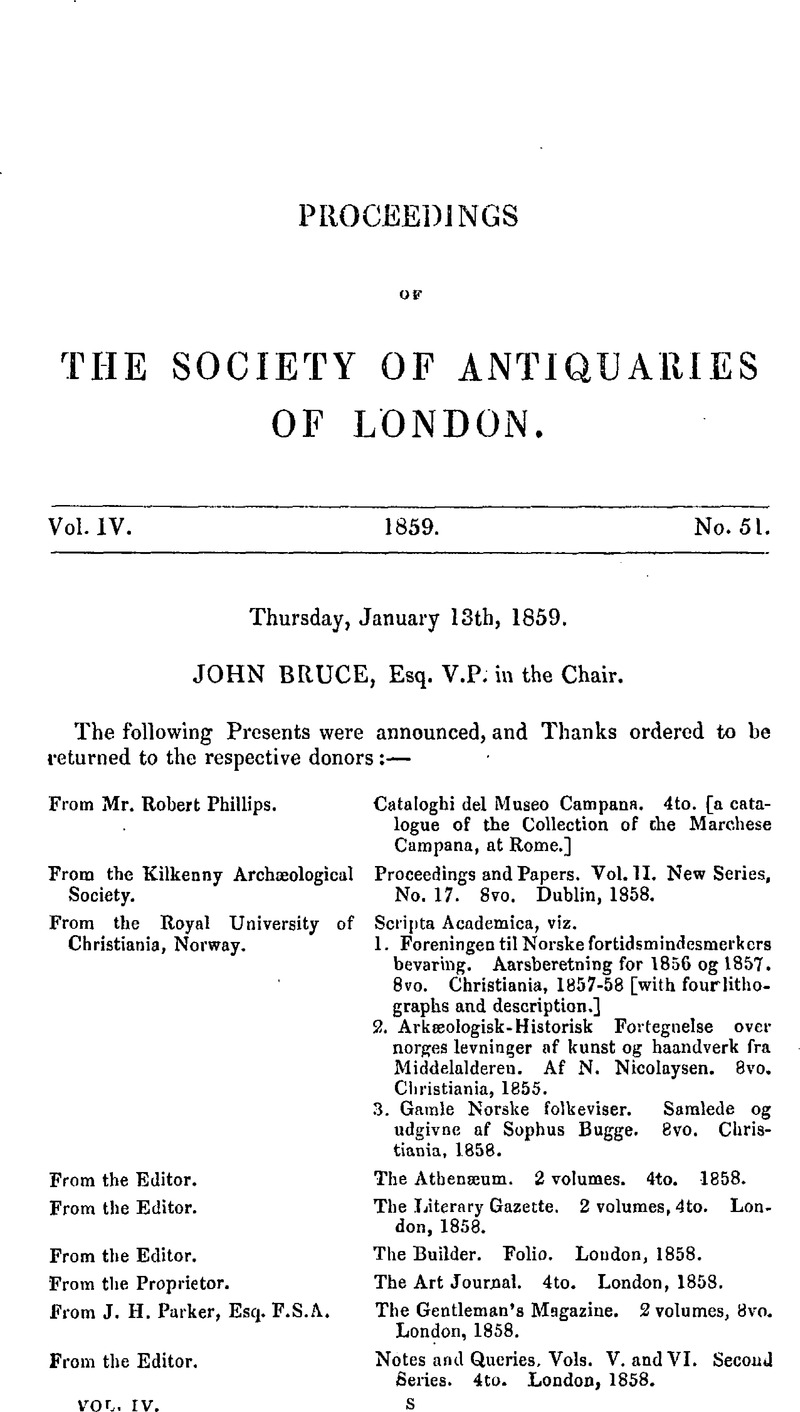No CrossRef data available.
Article contents
Thursday, January 13th, 1859
Published online by Cambridge University Press: 10 May 2010
Abstract

- Type
- Proceedings
- Information
- Copyright
- Copyright © The Society of Antiquaries of London 1859
References
page 254 note * This object has since passed into the collection of John Evans, Esq. F.S.A.
page 254 note † Ed. Parthey et Pinder. Berlin, 1848.
page 255 note * See Archæologia, Vol. xxxi. p. 279; and Proceediugs, Vol. IV. p. 128.
page 255 note * At or near this spot a denarius of Lucius Verus was discovered, which was presented to the Society by Mr. Reveley in 1852. See Proceedings, vol. iii. p. 106.
page 256 note * The course of the Iter as proposed by Mr. Reveley is based on placing Clanoventa at Caervoran, a station which is usually considered to be Magna of the Notitia, and there does not seem to be any reason for disturbing the received designation. Other writers have placed Glanov.enta or Glanoventa at Cockermouth, Lanchester, Fenrith, Abbey Holme, or Ellenborough. In the magnificent survey of the Roman Wall, recently made by Mr. MacLauchlan for the Duke of Northumberland, and privately printed by his Grace, this station is placed at Bowness, the western termination of the wall. Should Glanoventa have been at any of the places last mentioned, the course of the Iter must have been very different from that suggested by Mr. Reveley.




